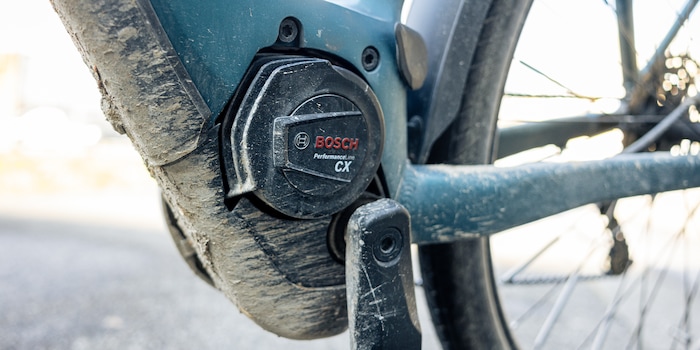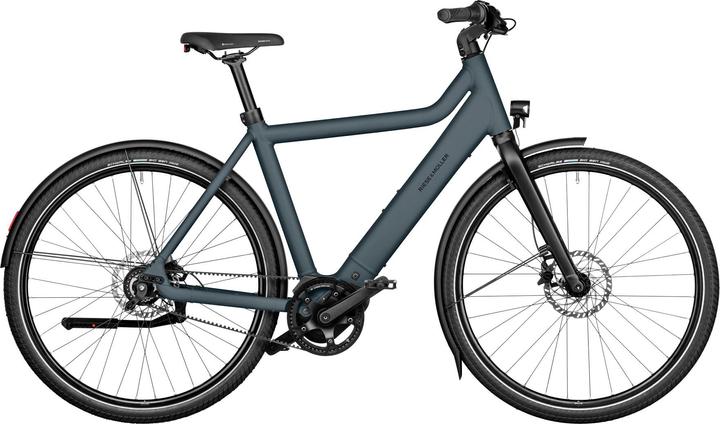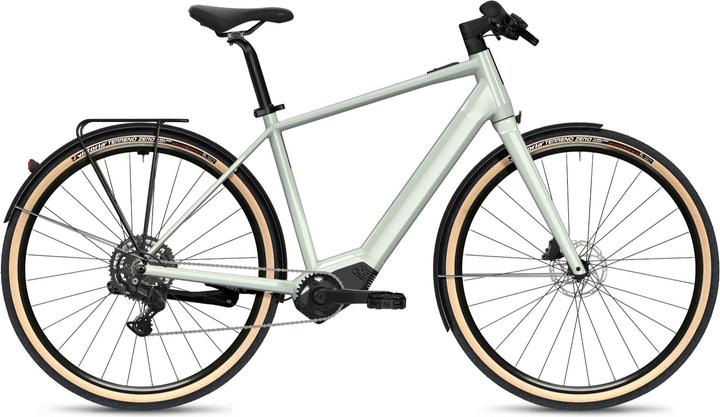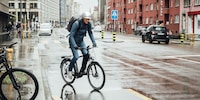

No, your e-bike isn’t slowing you down – even if it feels that way
The motor of an e-bike propels you forward. That’s until you hit 25 km/h. But what happens then? Will your bike start throttling your speed? People who know about these things gave me a clear answer.
I’ll spare you a long build-up to get to the point. After all, the matter is clear. Even if some e-bikers insist it’s true: the motor on your e-bike won’t start slowing down. Even the venerable «Frankfurter Allgemeine Zeitung» got this wrong when an author accused the bikes of doing just that in an article published in 2018:
If you want to cycle faster than 25 km/h, you’ll feel resistance. Just like you would on an exercise bike at the gym on the hardest setting. To reach 30 or 35, you have to work like a horse.
Perhaps the author’s more into cars, or perhaps e-bike technology wasn’t great back in 2018. Whatever the reason, the fact is the story told in the column is not (or no longer) true. It’s simply false that the gears of an e-bike motor aren’t decoupled and have to be moved by muscle power.
Bosch motors have a freewheel that’s completely decoupled from the drive unit, as I was told by the manufacturer. The information comes from a competent source: their engineers in Stuttgart. That’s where Bosch, a leading supplier of e-bike motors, works daily on bike drives that’ll get you places faster.
The sensation of pedal resistance is mainly caused by the bearing seals, which every non-motorised bike has, too. However, this resistance is very low. For the Performance Line SX, the lightest e-bike motor currently available from Bosch, it’s been reduced by a further 50 per cent compared to other Bosch drive units.
If you like the sound of an e-bike with this kind of miracle motor, there are several models available in our range:


Riese & Müller Riese & M?ller - Culture silent e-bike (50cm (160-175cm)/biscuit/carrier)

Flyer E-bike Upstreet SL 3.10 Bosch Smart System Performance Line SX 55Nm/400Wh/36V 28 inch Frosty
So what’s causing that feeling of a motor that’s slowing down once you go over 25 kilometres per hour? It’s motor assistance being deactivated. In fact, this is required by law for pedelecs. So if you’re travelling on a flat route, it’s probably a good idea to make do with 25 km/h. If you want to go faster, it’ll be up to you alone to power your e-bike. What’s good to know is that the so-called system weight of the motor is already lower in current models. The SX model, for example, only weighs around four kilogrammes and almost feels like a bike without electric assistance when you’re riding it.
That’s also why you don’t need to switch off the drive system when going downhill. Once you go over 25 km/h, it’ll deactivate anyway. If you then need pedal assistance again when the road’s flat or there’s an ascent, you’ll probably appreciate not having to switch it on again first.
Rules are rules: switch-off time at 25 km/h
Bosch is aware of the 25 km/h limit. At least the law allows for some wiggle room, so that pedal assist doesn’t stop abruptly at 25 km/h. Bosch explains that the motor is «gently adjusted» around this limit. I can confirm this from my own experience with my pedelec. When I approach a speed of 25 km/h, pedal assist decreases a little, but doesn’t cut completely, even at 26 km/h.
I’ve often wondered if I could tune up my motor. Maybe there’s a way of coaxing some energy out of my motor even at higher speeds? At least in theory. But the answer from Bosch bursts my dream like a soap bubble. «Technically speaking, this would be possible,» they tell me. However, the legal requirements are adhered to and the pedelec switches off the motor at 25 km/h plus the legal tolerance. And there’s more.
If you want pedal assist up to 45 km/h, you should consider getting an S-pedelec.
Sure, you could resort to searching for tuning modules in the underbelly of the internet. But this poses legal and safety risks, as the components installed in a 25 km/h bike are generally not designed for the stresses and strains of ongoing increased speeds and braking.
Recuperation not an option for Bosch
If you ride an e-bike and also have an electric car, you may have asked yourself this question: could the brake energy of a bike be recovered in the same way as in an electric car? Unfortunately, energy recuperation isn’t possible with the vast majority of e-bikes. With the mid-motor principle, i.e. the drive located directly on the bottom bracket, the rear wheel is decoupled by the hub freewheel. This means that the chain cannot transmit any power forward towards the motor.
Although there are a few e-bikes that generate electricity from braking and store it in the battery, these are rear-wheel drive bikes. This mainly makes sense for long, steady descents. However, stopping at traffic lights in the city or braking before going into a bend simply doesn’t provide enough.
Journalist since 1997. Stopovers in Franconia (or the Franken region), Lake Constance, Obwalden, Nidwalden and Zurich. Father since 2014. Expert in editorial organisation and motivation. Focus on sustainability, home office tools, beautiful things for the home, creative toys and sports equipment.
Interesting facts about products, behind-the-scenes looks at manufacturers and deep-dives on interesting people.
Show all

